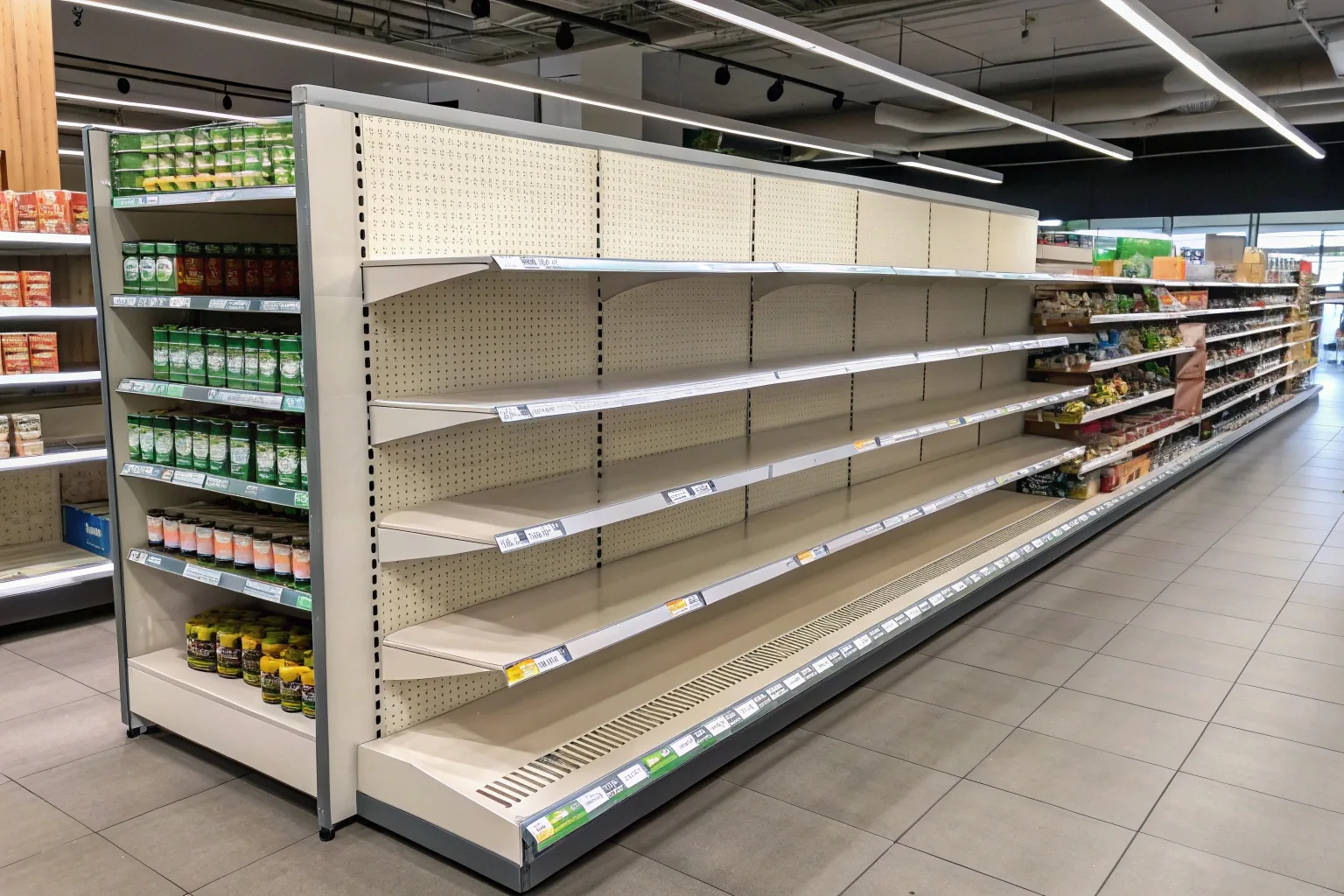
Your supply chain feels chaotic, and delivery dates for your packaging keep shifting. This uncertainty is more than an annoyance; it's secretly costing you a fortune in hidden fees and lost sales.
Unpredictable lead times force you to hold extra inventory, which costs money in storage. You often pay for expensive rush shipping to avoid stockouts. These delays also lead to lost sales when you simply don't have the product ready for your customers.
At Finer-packaging, I see clients struggle with this every day. The damage from a late box goes far beyond a simple shipping delay. It creates a ripple effect of hidden costs that can cripple your business. Let's dive deeper into these costs and see how they really add up.
How do long lead times directly impact your budget?
Are you holding way too much stock just in case of a delay? This ties up your cash, while unexpected rush shipping fees are destroying your profit margins. These are direct financial hits.
Long lead times force you to buy larger safety stocks, increasing inventory holding costs. To meet deadlines, you end up paying for expensive expedited shipping. You also risk inventory becoming obsolete if market trends change before your products even arrive.

The most obvious damage from supply chain volatility hits your bank account directly. These aren't abstract problems; they are real numbers that show up on your profit and loss statement. When you can't rely on your packaging supplier's timeline, you are forced to make defensive financial decisions that are always more expensive. As a manufacturer, I understand the pressure to keep costs low, which is why we focus on a stable 10-15 business day production schedule. When that stability is missing from your supply chain, three major costs begin to eat away at your profits.
The Cost of Excess Inventory
When you don't know if your custom boxes will arrive in 4 weeks or 12 weeks, what do you do? You order more than you need, just to be safe. This "safety stock" seems like a smart move, but it has a real cost.
- Holding Costs: You have to pay for the warehouse space to store all those extra boxes. This can be 15-25% of the inventory's value per year.
- Tied-Up Capital: The money you spent on those extra boxes is cash that you can't use for marketing, product development, or other growth areas.
- Risk of Obsolescence: What if you rebrand or change your product's design? Suddenly, thousands of old boxes are useless. This is a common problem when lead times are so long that your business strategy changes before the packaging even arrives.
The Expense of Expedited Shipping
Here is a scenario I see all the time. A supplier promises a 6-week lead time. At week 5, they tell you it's going to be another month. But you have a retail deadline you absolutely cannot miss. Your only option is to pay for air freight instead of sea freight, which can be 5 to 10 times more expensive.
| Shipping Method | Typical Transit Time (China to USA) | Example Cost (Per Unit) |
|---|---|---|
| Sea Freight | 30-40 days | $0.15 |
| Air Freight | 5-10 days | $1.20 |
| Express Air | 3-5 days | $2.50+ |
These rush fees are a direct tax on unpredictability. A reliable supplier with a clear production schedule allows you to plan your logistics properly and avoid these emergency costs completely.
The Threat of Product Redesigns
Supply chain volatility doesn't just apply to finished goods. It also affects raw materials. If your supplier suddenly can't get the specific type of paperboard you requested, they might force you into a substitution. This could require you to redesign your artwork or even the box structure to accommodate the new material, leading to unexpected design fees and internal labor costs.
What operational damage is caused by delivery delays?
Are your production lines sitting idle waiting for boxes? Your sales team is telling customers "it's coming soon," but you have no real date. This chaos grinds your entire operation to a halt.
Delayed packaging components cause expensive production line stoppages. This leads directly to missed sales and empty shelves. Ultimately, these stockouts disappoint loyal customers, who may decide to buy from a competitor next time.

The financial costs are easy to track, but the operational damage is often more severe. Unpredictable lead times create a domino effect that can paralyze your business from the factory floor to the store shelf. Your company is a machine with many moving parts, and when a critical component like packaging fails to arrive on time, the entire machine breaks down. This isn't just an inconvenience; it's a fundamental disruption that undermines your ability to function and compete.
Production Line Stoppages
Imagine this: your product is ready, your staff is scheduled to work, and your machines are warmed up. Everything is set for a big production run. But the custom boxes you need are stuck on a ship somewhere in the Pacific. What happens now?
- Idle Labor: You have to pay your staff even though they have nothing to pack.
- Idle Equipment: Your expensive machinery is sitting unused, not generating any revenue.
- Scheduling Chaos: You have to reschedule the entire production run, which can create conflicts with other products and deadlines.
This is one of the most wasteful and frustrating consequences of lead-time uncertainty. At our factory, we know that our boxes are often the last step in our clients' process. A delay on our end has a massive downstream impact, which is why we treat our 10-15 day production time as a firm commitment.
Missed Sales and Stockouts
The most direct consequence of an operational failure is a stockout. When your product isn't on the shelf (physical or digital), you can't sell it. This is not a deferred sale; in many cases, it's a lost sale forever. If a customer wants your product today but it's unavailable, they will likely buy a competitor's product instead. You've lost not only the revenue from that one sale but also potentially the lifetime value of that customer. This reduces your flexibility and makes it impossible to react quickly to a sudden spike in market demand.
Damaged Customer Loyalty
Your brand is built on promises. When you promise a delivery date and fail to meet it, you break that promise. A single delay might be forgiven, but consistent issues with product availability erode trust. Customers who rely on your products will become frustrated and look for a more dependable alternative. In the B2B world, this is even more critical. If your delays cause your retail partner to have empty shelves, they will be very unhappy. This can lead to damaged business relationships, smaller future orders, or even being dropped as a vendor.
Are your employees spending hours a day chasing suppliers for updates? Your team is stressed, your supplier relationships are strained, and trust is completely broken. This is the human cost of chaos.
An unstable supply chain creates a huge administrative burden, forcing your team to track delayed orders constantly. The constant stress damages relationships with your suppliers, and this lack of trust makes future collaboration even more difficult and inefficient.

Beyond the direct financial and operational costs, there is a significant hidden workload created by supply chain volatility. This is the human cost—the hours, stress, and energy that your team wastes trying to manage a chaotic and unpredictable situation. This administrative drag is often overlooked when calculating the true cost of a supplier, but it can be one of the most damaging factors. It diverts your team's attention from valuable activities like innovation and growth to low-value tasks like crisis management.
Increased Administrative Overhead
When a shipment is on time, the administrative work is minimal. When it's late, the work explodes. Think about all the tasks your team has to do:
- Constant Follow-Up: Multiple emails and phone calls per day to the supplier, freight forwarder, and customs broker to get a status update.
- Internal Communication: Relaying this information to your sales, marketing, and production teams, and managing their expectations.
- Customer Communication: Proactively (or reactively) informing customers about delays, which can be a difficult and time-consuming task.
- System Updates: Manually updating expected delivery dates in your ERP or inventory management systems.
All these hours add up to a significant labor cost. You are essentially paying your team to manage your supplier's failures.
Damaged Supplier Relationships
A good supplier relationship is a partnership built on trust and communication. When lead times are constantly changing and information is unreliable, that trust breaks down. The relationship shifts from collaborative to adversarial. Your conversations become focused on missed deadlines and problems instead of future planning and improvements. This strain makes it harder to resolve issues when they arise and eliminates any possibility of your supplier going the extra mile to help you. We believe in being a partner, not just a vendor. That's why clear, honest communication is a core part of our service.
Reduced Strategic Focus
Ultimately, the biggest hidden cost is the loss of focus. Your best people are spending their time putting out fires instead of thinking about the future. Your procurement manager is chasing a delayed container instead of finding innovative, sustainable materials. Your marketing manager is handling customer complaints about stockouts instead of planning your next big product launch. This constant crisis mode prevents your business from being proactive and strategic, trapping you in a cycle of reacting to problems caused by a volatile supply chain.
Conclusion
Unpredictable lead times are not just an inconvenience; they are a direct threat to your profits, operations, and relationships. They create hidden costs that drain your resources and limit your growth.






